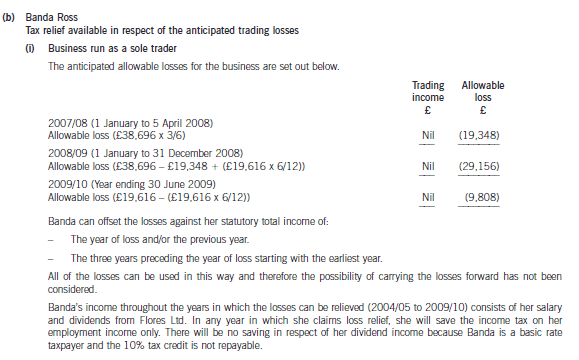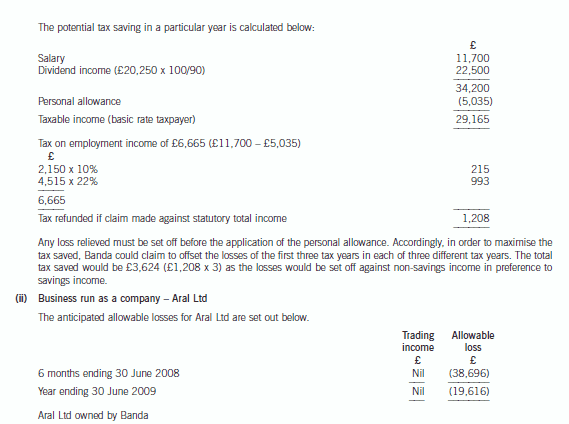acca所要的数学程度是多少呢?
发布时间:2021-03-12
acca所要的数学程度是多少呢?
最佳答案
考试都会给公式的。。外国人的数学和中国人没法比的 没有特别艰深的内容,运用的大多数都是加减乘除,只是数据量比较大而已
下面小编为大家准备了 ACCA考试 的相关考题,供大家学习参考。
(d) Discuss the main benefits that might accrue from the successful implementation of a Total Quality
Management programme by the management of the combined entity. (5 marks)
(d) The benefits that might accrue from the successful implementation of a Total quality management programme by the
management of the combined entity include the following:
– There will be an increased awareness of all personnel within Quicklink Ltd of the need to establish a ‘quality culture’
within the company which will provide a basis of improved performance throughout the organisation.
– The successful adoption of a TQM philosophy would ensure that there is a real commitment to ‘continuous improvement’
in all processes.
– It would place a greater focus on customer satisfaction since at the heart of any TQM programme is a deep-seated
commitment to the satisfaction of every customer.
– There would be a greater emphasis upon teamwork which would be used in a number of forms e.g. quality circles which
could be established with a view to improving performance within every area of the business. The fostering of team spirit
will also improve communication within Quicklink Ltd.
– A major characteristic of a TQM programme is process-redesign which is used to simplify processes, systems,
procedures and the organisation itself. In this respect the adoption of a TQM philosophy will be invaluable since the
integration of the Quicklink Ltd and Celer Transport businesses will require, of necessity, a detailed review of those
processes currently employed.
– The adoption of a TQM philosophy will necessitate the monitoring of quality costs in order to measure whether the
objective of continuous improvement is being achieved. In this respect the aim will be to eliminate internal failure costs
such as late deliveries and lost items which are clearly detrimental to a business which operates in the transport and
haulage industry.
(ii) Discuss whether gains and losses that have been reported initially in one section of the performance
statement should be ‘recycled’ in a later period in another section and whether only ‘realised’ gains and
losses should be included in such a statement. (9 marks)
(ii) Recycling is an issue for both the current performance statements and the single statement. Recycling occurs where an
item of financial performance is reported in more than one accounting period because the nature of the item has in some
way changed. It raises the question as to whether gains and losses originally reported in one section of the statement
should be reported in another section at a later date. An example would be gains/losses on the retranslation of the net
investment in an overseas subsidiary. These gains could be reported annually on the retranslation of the subsidiary and
then again when the subsidiary was sold.
The main arguments for recycling to take place are as follows:
1. when unrealised items become realised they should be shown again
2. when uncertain measurements become certain they should be reported again
3. all items should be shown in operating or financing activities at some point in time as all items of performance are
ultimately part of operating or financing activities of an entity.
There is no conceptual justification for recycling. Once an item has been recognised in a statement of financial
performance it should not be recognised again in a future period in a different part of that statement. Once an item is
recognised in the statement there is an assumption that it can be reliably measured and therefore it should be recognised
in the appropriate section of the statement with no reason to show it again.
Gains and losses should not be based on the notion of realisation. Realisation may have been a critical event historically
but given the current financial exposures of many entities, such a principle has limited value. A realised gain reflects the
same economic gain as an unrealised gain. Items should be classified in the performance statement on the basis of
characteristics which are more useful than realisation. The effect of realisation is explained better in the cash flow
statement. Realisation means different things in different countries. In Europe and Asia it refers to the amount of
distributable profits but in the USA it refers to capital maintenance. The amount of distributable profits is not an
accounting but a legal issue, and therefore realisation should not be the overriding determinant of the reporting of gains
and losses.
An alternative view could be that an unrealised gain is more subjective than a realised gain. In many countries, realised
gains are recognised for distribution purposes because of their certainty because this gives more economic stability to
the payment of dividends.
2 The risk committee at Southern Continents Company (SCC) met to discuss a report by its risk manager, Stephanie
Field. The report focused on a number of risks that applied to a chemicals factory recently acquired by SCC in another
country, Southland. She explained that the new risks related to the security of the factory in Southland in respect of
burglary, to the supply of one of the key raw materials that experienced fluctuations in world supply and also an
environmental risk. The environmental risk, Stephanie explained, was to do with the possibility of poisonous
emissions from the Southland factory.
The SCC chief executive, Choo Wang, who chaired the risk committee, said that the Southland factory was important
to him for two reasons. First, he said it was strategically important to the company. Second, it was important because
his own bonuses depended upon it. He said that because he had personally negotiated the purchase of the Southland
factory, the remunerations committee had included a performance bonus on his salary based on the success of the
Southland investment. He told Stephanie that a performance-related bonus was payable when and if the factory
achieved a certain level of output that Choo considered to be ambitious. ‘I don’t get any bonus at all until we reach
a high level of output from the factory,’ he said. ‘So I don’t care what the risks are, we will have to manage them.’
Stephanie explained that one of her main concerns arose because the employees at the factory in Southland were not
aware of the importance of risk management to SCC. She said that the former owner of the factory paid less attention
to risk issues and so the staff were not as aware of risk as Stephanie would like them to be. ‘I would like to get risk
awareness embedded in the culture at the Southland factory,’ she said.
Choo Wang said that he knew from Stephanie’s report what the risks were, but that he wanted somebody to explain
to him what strategies SCC could use to manage the risks.
Required:
(a) Describe four strategies that can be used to manage risk and identify, with reasons, an appropriate strategy
for each of the three risks mentioned in the case. (12 marks)
(a) Risks at Southland and management strategies
Risk management strategies
There are four strategies for managing risk and these can be undertaken in sequence. In the first instance, the organisation
should ask whether the risk, once recognised, can be transferred or avoided.
Transference means passing the risk on to another party which, in practice means an insurer or a business partner in another
part of the supply chain (such as a supplier or a customer).
Avoidance means asking whether or not the organisation needs to engage in the activity or area in which the risk is incurred.
If it is decided that the risk cannot be transferred nor avoided, it might be asked whether or not something can be done to
reduce or mitigate the risk. This might mean, for example, reducing the expected return in order to diversify the risk or
re-engineer a process to bring about the reduction.
Risk sharing involves finding a party that is willing to enter into a partnership so that the risks of a venture might be spread
between the two parties. For example an investor might be found to provide partial funding for an overseas investment in
exchange for a share of the returns.
Finally, an organisation might accept or retain the risk, believing there to be no other feasible option. Such retention should
be accepted when the risk characteristics are clearly known (the possible hazard, the probability of the risk materialising and
the return expected as a consequence of bearing the risk).
Risks in the case and strategy
There are three risks to the Southland factory described in the case.
Risk to the security of the factory in Southland. This risk could be transferred. The transference of this risk would be through
insurance where an insurance company will assume the potential liability on payment, by SCC, of an appropriate insurance
premium.
Risk to the supply of one of the key raw materials that experienced fluctuations in world supply. This risk will probably have
to be accepted although it may be possible, with redesigning processes, to reduce the risk.
If the raw material is strategically important (i.e. its use cannot be substituted or reduced), risk acceptance will be the only
possible strategy. If products or process can be redesigned to substitute or replace its use in the factory, the supply risk can
be reduced.
The environmental risk that concerned a possibility of a poisonous emission can be reduced by appropriate environmental
controls in the factory. This may require some process changes such as inventory storage or amendments to internal systems
to ensure that the sources of emissions can be carefully monitored.
Tutorial note: the strategies for the individual risks identified in the case are not the only appropriate responses and other
strategies are equally valid providing they are supported with adequate explanation.
(b) The tax relief available in respect of the anticipated trading losses, together with supporting calculations and
a recommended structure for the business. (16 marks)


Aral Ltd owned by Banda
The losses would have to be carried forward and deducted from the trading profits of the year ending 30 June 2010.
Aral Ltd cannot offset the loss in the current period or carry it back as it has no other income or gains.
Aral Ltd owned by Flores Ltd
The two companies will form. a group relief group if Flores Ltd owns at least 75% of the ordinary share capital of Aral
Ltd. The trading losses could be surrendered to Flores Ltd in the year ending 30 June 2008 and the year ending
30 June 2009. The total tax saved would be £11,079 ((£38,696 + £19,616) x 19%)
Recommended structure
The Aral business should be established in a company owned by Flores Ltd.
This will maximise the relief available in respect of the trading losses and enable relief to be obtained in the period in
which the losses are incurred.
Tutorial note
The whole of the loss for the period ending 30 June 2008 can be surrendered to Flores Ltd as it is less than that
company’s profit for the corresponding period, i.e. £60,000 (£120,000 x 6/12).
声明:本文内容由互联网用户自发贡献自行上传,本网站不拥有所有权,未作人工编辑处理,也不承担相关法律责任。如果您发现有涉嫌版权的内容,欢迎发送邮件至:contact@51tk.com 进行举报,并提供相关证据,工作人员会在5个工作日内联系你,一经查实,本站将立刻删除涉嫌侵权内容。
- 2021-05-27
- 2021-01-04
- 2021-03-12
- 2021-03-12
- 2021-03-11
- 2021-03-12
- 2021-04-21
- 2021-04-21
- 2021-04-22
- 2021-01-02
- 2021-06-08
- 2021-07-07
- 2021-03-12
- 2021-04-23
- 2021-05-08
- 2021-11-17
- 2021-06-27
- 2021-05-20
- 2021-01-04
- 2021-03-11
- 2021-04-14
- 2021-03-11
- 2021-03-12
- 2021-03-11
- 2021-05-27
- 2021-03-11
- 2021-06-17
- 2021-03-11
- 2021-03-12
- 2021-04-14